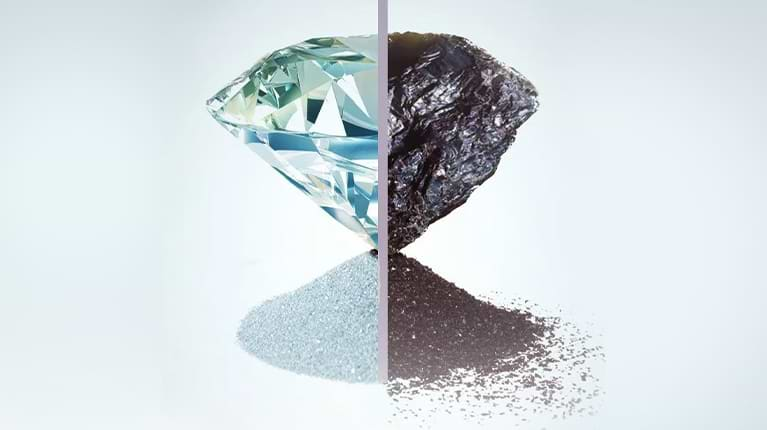
The diamond industry has experienced significant changes over the years, with the rise of lab-grown diamonds offering an alternative to traditional mined diamonds. Understanding the differences between mined and lab diamonds is crucial for anyone considering purchasing a diamond. Both types offer unique benefits and appeal to various consumers based on their preferences, values, and budget. In this article, we will explore the essential distinctions between mined and lab diamonds, and why many people are turning to mined or lab diamonds as a preferred choice.
Table of Contents
ToggleThe Origin of Mined and Lab Diamonds
Mined diamonds, also known as natural diamonds, are formed deep within the Earth’s crust under extreme pressure and temperature conditions over millions of years. These diamonds are extracted through mining operations, which can be labor-intensive and often have significant environmental impacts. Mined diamonds have a long history of being considered the ultimate symbol of luxury, often used in engagement rings and fine jewelry.
On the other hand, lab diamonds are created in controlled environments using advanced technology. The process involves replicating the natural conditions under which mined diamonds are formed, using either high-pressure, high-temperature (HPHT) or chemical vapor deposition (CVD) techniques. The result is a diamond that is chemically identical to a mined diamond, but with a much shorter creation time – usually a few weeks to a few months. While lab diamonds are relatively new, their popularity has been growing rapidly due to their ethical and environmental advantages.
Ethical Considerations: Mined or Lab Diamonds?
One of the most significant differences between mined and lab diamonds is the ethical concerns surrounding their origins. Mined diamonds have long been associated with human rights abuses, environmental degradation, and the financing of conflict zones, leading to the rise of the term “blood diamonds.” Despite efforts to ensure that diamonds are sourced responsibly, there are still concerns regarding the transparency of diamond supply chains.
Lab-grown diamonds, on the other hand, offer a more ethical alternative. Because they are created in controlled lab settings, there is no risk of supporting conflict or unethical labor practices. Additionally, lab diamonds do not contribute to the environmental destruction associated with traditional diamond mining, such as deforestation and habitat disruption. For many consumers, the ethical considerations of lab diamonds outweigh the historical appeal of mined diamonds.
Novitadiamonds.com is an online jewelry store offering a wide selection of high-quality diamonds and fine jewelry. The website features beautifully crafted pieces, including diamond rings, earrings, bracelets, and necklaces, designed to suit various occasions. Novitadiamonds.com focuses on providing a premium shopping experience, with detailed product descriptions and high-quality images. Whether you’re looking for an engagement ring or a special gift, Novitadiamonds.com is a great destination for those seeking elegant and timeless diamond jewelry.
Cost Comparison: Mined Diamonds vs. Lab Diamonds
The cost of diamonds is a critical factor for most buyers, and this is where the difference between mined and lab diamonds becomes more apparent. Mined diamonds are often much more expensive than their lab-grown counterparts, due to the labor-intensive and costly mining process. The rarity of natural diamonds also contributes to their higher price. The cost of a mined diamond increases based on factors such as carat weight, cut, color, and clarity.
Lab diamonds, however, are generally more affordable because their production costs are lower. The controlled environment in which they are grown reduces the need for extensive labor and transportation, making lab-grown diamonds a more cost-effective option. Buyers can get a larger, higher-quality diamond for the same budget when choosing a lab diamond over a mined one, which makes them an attractive option for those looking for value without compromising on quality.
Quality and Appearance: Mined vs. Lab Diamonds
When it comes to the appearance and quality of mined and lab diamonds, there is virtually no difference. Both types of diamonds are made of pure carbon atoms arranged in a crystal structure. Lab diamonds undergo the same grading process as mined diamonds and are evaluated based on the same criteria: carat weight, cut, color, and clarity. Lab diamonds are known for their brilliance and clarity, as they are created in a controlled environment where conditions are ideal for producing high-quality stones.
Mined diamonds, although natural, can sometimes exhibit more imperfections, as they have been exposed to millions of years of environmental factors. However, the beauty and appeal of mined diamonds lie in their rarity and natural origin. For some buyers, owning a mined diamond is about having a piece of nature’s wonder, and this appeal is hard to match with a lab diamond. Nevertheless, lab diamonds can achieve the same level of beauty and radiance as mined diamonds, which makes them a popular alternative for many customers.
The Environmental Impact of Mined and Lab Diamonds
The environmental impact of diamond production is a topic that has garnered increasing attention in recent years. Mined diamonds are often associated with significant ecological damage, such as soil erosion, deforestation, and water pollution. The mining process can also lead to the destruction of entire ecosystems and the displacement of local communities. While some mining companies are working toward more sustainable practices, the overall environmental cost of mined diamonds remains high.
In contrast, lab-grown diamonds have a much lower environmental footprint. The production of lab diamonds requires far less land, water, and energy compared to the extraction of mined diamonds. Moreover, the carbon footprint of a lab diamond is significantly smaller, especially if the energy used in the production process comes from renewable sources. For consumers who are concerned about sustainability and the environment, lab-grown diamonds provide an eco-friendly option without sacrificing quality or beauty.
The Future of Mined and Lab Diamonds
The future of both mined and lab diamonds looks promising, though each faces its own set of challenges and opportunities. Mined diamonds will always hold a place in the luxury market, as their rarity and natural origin continue to appeal to consumers who value tradition and uniqueness. However, the growing awareness of the ethical and environmental issues surrounding diamond mining may lead more people to reconsider their purchasing decisions.
Lab diamonds, with their lower cost, ethical benefits, and sustainability, are likely to continue gaining market share. As technology improves and lab diamonds become even more indistinguishable from mined diamonds, more consumers may choose them as an alternative. The future of the diamond industry is undoubtedly shifting toward lab-grown options, though mined diamonds will continue to hold cultural and emotional value for many years to come.
In conclusion, both mined and lab diamonds offer unique advantages and considerations. Mined diamonds hold historical and symbolic significance, while lab diamonds provide an ethical, cost-effective, and sustainable choice. By understanding the differences between these two options, consumers can make more informed decisions about which type of diamond best fits their needs and values.

